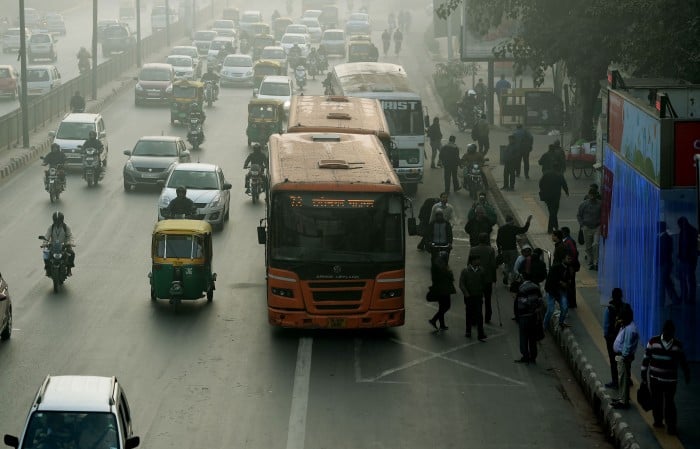India Now Has the World’s Worst Air Pollution

This is not a distinction any country wants. India’s toxic air is now contributing to nearly 1.1 million deaths a year, and the country is on its way toward standing alone as the site of the deadliest air pollution problem on the planet.
We’ve all seen pictures of Chinese cities blanketed in smog, and China’s air pollution has been the world’s worst for years in terms of the number of premature deaths it causes. But it’s now roughly tied with India, and the two countries appear headed in opposite directions, according to a new report on global air quality released Tuesday.
The study, a joint effort between the Health Effects Institute in Boston and the Seattle-based Institute of Health Metrics and Evaluation, suggests that since 1990, developed countries like the U.S. and much of Europe have made continued strides in cleaning up their air. And while China has been the poster child for foul air for years, strong government regulation has leveled off its overall deaths attributable to air pollution over the last five years, while the death rate has been on a steady downward trend.
Not so for India. From 2010 to 2015, the number of premature deaths caused by air pollution each year has gone from 957,000 to about 1.1 million. While the death rate has remained the same, several factors—including rapid industrialization, a heavy reliance on coal for energy, population growth, and an aging populace that is more vulnerable to the effects of air pollution—have combined to create what one researcher told the New York Times was “the perfect storm for India.”
Of course, India is far from the only country that needs to think hard about the detrimental health effects of polluted air as it pursues economic growth. A report in the Guardian on Monday found that air pollution is so bad in many cities that the physical benefits of cycling get erased after just 30 minutes of breathing in the microscopic particles that are the main contributor to air-pollution-related deaths.
(Read more: The New York Times, The Guardian, “Can Machine Learning Help Lift China’s Smog?,” “How Dirty Is Your Air?”)
Deep Dive
Climate change and energy
The problem with plug-in hybrids? Their drivers.
Plug-in hybrids are often sold as a transition to EVs, but new data from Europe shows we’re still underestimating the emissions they produce.
Harvard has halted its long-planned atmospheric geoengineering experiment
The decision follows years of controversy and the departure of one of the program’s key researchers.
Why hydrogen is losing the race to power cleaner cars
Batteries are dominating zero-emissions vehicles, and the fuel has better uses elsewhere.
Decarbonizing production of energy is a quick win
Clean technologies, including carbon management platforms, enable the global energy industry to play a crucial role in the transition to net zero.
Stay connected
Get the latest updates from
MIT Technology Review
Discover special offers, top stories, upcoming events, and more.